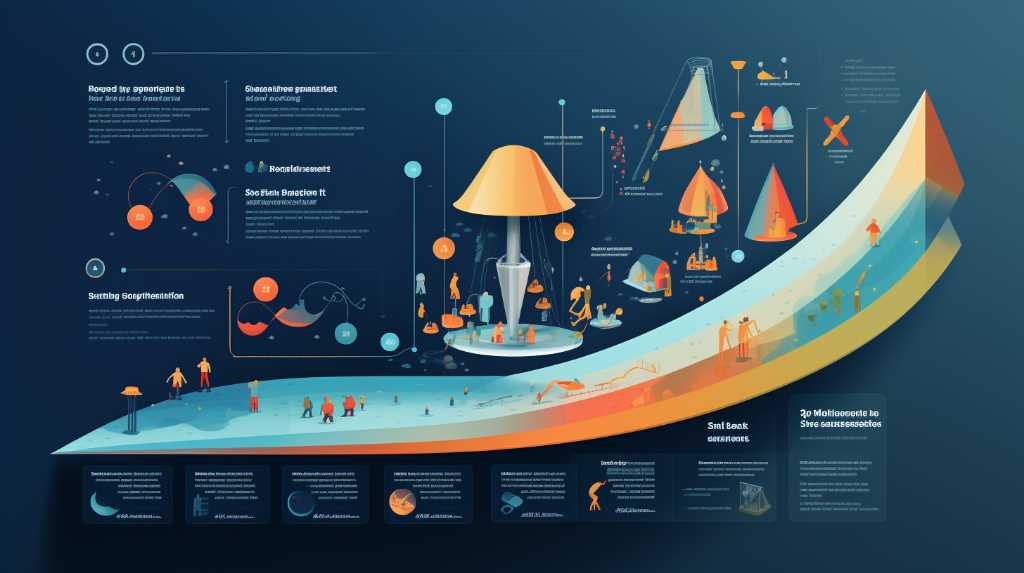When you optimize your content for search engines, you're likely aware of the importance of keywords and the latest SEO tactics. However, you may not know that the manner in which users phrase their queries has a profound effect on the visibility of your content.
As you focus on crafting material that addresses these informational searches, you'll need to understand not just the what, but the how and why behind the questions your audience is asking. Identifying the right informational keywords is just the tip of the iceberg; you must also master the art of creating engaging explanatory content that resonates with the reader's intent.
Moreover, structuring this content for easy consumption can make the difference between a top-ranking page and one that's lost in the abyss of search results.
As we unpack the layers of effective content creation, you'll discover strategies to amplify your impact on the informational search landscape, ensuring that your content not only reaches the right audience but also holds their attention in a digital world brimming with competition.
Key Takeaways
- Understanding the informational search intent and identifying informational keywords are crucial for crafting content that fulfills users' quest for knowledge.
- Crafting engaging explanatory content involves starting with a clear introduction, using headings and subheadings, providing thorough explanations, and utilizing visuals to illustrate points.
- Structuring content for easy consumption includes using clear headers, presenting information in bite-sized pieces with bullet points or numbered lists, keeping paragraphs short, and ensuring a smooth flow throughout the content.
- Optimizing for SERP analysis involves assessing competition, recognizing keyword intent, analyzing competitors' content structure and SEO tactics, and filling gaps with comprehensive and up-to-date content to align with user expectations.
Understanding Informational Search Intent
 To effectively engage users, it's essential to grasp that informational search intent arises when individuals are seeking answers or knowledge about a specific topic. They're driven by curiosity or a need to understand something, and they turn to search engines as a trusted source. You're tasked with fulfilling this quest for knowledge, and that's where the nuance of crafting content comes into play.
To effectively engage users, it's essential to grasp that informational search intent arises when individuals are seeking answers or knowledge about a specific topic. They're driven by curiosity or a need to understand something, and they turn to search engines as a trusted source. You're tasked with fulfilling this quest for knowledge, and that's where the nuance of crafting content comes into play.
Your content must be informative, accurate, and easily digestible. Users aren't looking to make a purchase; they want to learn. So, you need to anticipate their questions and provide comprehensive answers. Think about the 'who,' 'what,' 'where,' 'when,' 'why,' and 'how' of your topic. By addressing these elements, you hit the core of informational intent.
Keep in mind, search engines like Google prioritize content that demonstrates expertise, authoritativeness, and trustworthiness (E-A-T). Your content should reflect these qualities. Use credible sources, cite data when possible, and maintain a tone that shows you're an authority on the subject.
Identifying Informational Keywords
 Having established the importance of fulfilling informational intent, let's focus on pinpointing the informational keywords that users are likely to use in their queries. You need to think like your audience; what questions might they have? Start with 'who,' 'what,' 'where,' 'when,' 'why,' and 'how.' These question words are the cornerstone of informational searches.
Having established the importance of fulfilling informational intent, let's focus on pinpointing the informational keywords that users are likely to use in their queries. You need to think like your audience; what questions might they have? Start with 'who,' 'what,' 'where,' 'when,' 'why,' and 'how.' These question words are the cornerstone of informational searches.
Use tools like Google's Keyword Planner, Kwestify or AnswerThePublic to uncover the exact phrases people type into search engines. Look for long-tail keywords, which are longer and more specific. They might've lower search volumes, but they're less competitive and highly targeted. Don't forget to analyze the search engine results pages (SERPs) for your chosen keywords.
Notice the commonalities in the top-ranking content. What're they addressing that you might've missed? This insight guides you to refine your keyword list to match user intent more precisely.
Crafting Engaging Explanatory Content

Once you've identified your target informational keywords, it's crucial to craft content that not only engages but also educates your readers effectively. You're aiming to answer questions, solve problems, and deliver knowledge in a way that's both compelling and easy to understand.
Your content should start with a clear introduction that sets expectations. Let your readers know exactly what they'll learn and why it's important. Use headings and subheadings to break up text and guide your audience through the material. They're not just scanning for information; they're seeking understanding.
Make sure your explanations are thorough. Dive deep into the topic, but remember to keep your language simple and accessible. Complex jargon can turn readers away, so whenever you use technical terms, explain them. Analogies and real-world examples can bridge the gap between unfamiliar concepts and your reader's experiences.
Visuals are your ally. Infographics, charts, and videos can illustrate points more effectively than text alone. They also serve as a break from reading, keeping engagement high. Lastly, encourage interaction.
Ask questions or suggest actions readers can take to apply the information. By crafting content that speaks directly to your audience's quest for knowledge, you'll not only satisfy their informational needs but also build trust and authority in your niche.
Structuring Content for Easy Consumption
 Understanding how to structure your content effectively is key to ensuring your audience can easily digest and remember the information you present. Think of your content as a well-organized closet where everything has its place, making it simpler for you to find what you need. Similarly, when your content is neatly arranged, your readers can navigate through it effortlessly.
Understanding how to structure your content effectively is key to ensuring your audience can easily digest and remember the information you present. Think of your content as a well-organized closet where everything has its place, making it simpler for you to find what you need. Similarly, when your content is neatly arranged, your readers can navigate through it effortlessly.
Start by breaking up your text with headers that clearly indicate what each section covers. These act like signposts that guide your readers through the landscape of your content. Utilize bullet points or numbered lists to present information in bite-sized pieces that are easier to process and recall than dense paragraphs.
Make sure to keep your paragraphs short – aim for two to three sentences each. This approach not only improves readability but also keeps your readers' attention focused. To ensure a smooth flow, transition seamlessly between ideas. Use connecting words and phrases that serve as bridges, carrying your readers from one thought to the next without confusion.
Optimizing for SERP Analysis
 You need to assess the competition on search engine results pages (SERPs) to understand how to edge them out. It's crucial to recognize the intent behind the keywords you're targeting to match user expectations.
You need to assess the competition on search engine results pages (SERPs) to understand how to edge them out. It's crucial to recognize the intent behind the keywords you're targeting to match user expectations.
Analyzing SERP Competitors
To effectively tailor your content for informational search impact, it's crucial to analyze the SERP competitors that currently dominate the search results for your target keywords.
- Start by identifying who's ranking at the top for the queries you're aiming to conquer. Look at their content's structure, the keywords they're targeting, and their on-page SEO tactics.
- Check out their backlink profile to understand how they've built authority.
- Don't just replicate what they're doing; instead, look for gaps in their content that you can fill. Are they missing out on certain questions or topics? Is their content outdated?
- Use these insights to create more comprehensive, up-to-date content. Remember, your goal isn't just to match them but to outdo them.
Integrating Keyword Intent
Having analyzed your SERP competitors, it's time to focus on integrating keyword intent to refine your content strategy for better search engine results page (SERP) positioning. You'll want to decipher whether users are looking for information, seeking to make a purchase, or comparing products. It's not just about including the right keywords; it's about matching your content with what searchers intend to find.
Think about the questions they're asking and the problems they're trying to solve. Are they in discovery mode, or ready to take action? Tailor your content to answer their queries and guide them through their journey. By aligning your content with user intent, you'll not only improve your SERP rankings but also increase the likelihood of engaging your audience and driving conversions.
Diversifying Content Formats
 To capture your audience's attention, it's crucial you include a variety of content formats. You'll find that incorporating multimedia not only enriches the user experience but also caters to different learning styles. Don't overlook the power of interactive elements and infographics; they make complex information more digestible and engaging.
To capture your audience's attention, it's crucial you include a variety of content formats. You'll find that incorporating multimedia not only enriches the user experience but also caters to different learning styles. Don't overlook the power of interactive elements and infographics; they make complex information more digestible and engaging.
Embrace Multimedia Approaches
Diversifying your content with various multimedia formats can significantly enhance your audience's informational experience. When you integrate videos, infographics, podcasts, and slideshows, you're not just capturing attention; you're offering information through different sensory channels. It's about meeting your users where they're and catering to varied preferences.
Think about it: some folks grasp concepts better through visual aids, while others retain information through auditory means. By embracing multimedia, you cater to these diverse learning styles. Plus, multimedia elements can break up text-heavy pages, making your content more digestible and engaging.
Interactive Elements Boost
Building on the variety offered by multimedia, interactive elements like quizzes and polls can further engage your audience and personalize their learning journey. These tools not only make your content more dynamic but also allow you to gather valuable data on user preferences and understanding.
Infographics for Quick Understanding
Infographics serve as visual shortcuts, instantly conveying complex data in an easily digestible format that enhances your audience's comprehension. When you're developing content, consider integrating infographics to break up text-heavy information. They're not just eye-catching; they enable your readers to grasp intricate concepts quickly and remember them more easily.
You're competing for attention in an environment flooded with information. By using infographics, you're more likely to capture and hold that attention. They can also boost shareability, increasing your content's reach. Remember to keep them clear and focused on the key message you want to communicate. With the right design, your infographics can become a powerful tool in your content strategy, making complex information accessible at a glance.
Frequently Asked Questions
How Do I Measure the Success of My Informational Content in Terms of User Engagement and Retention?
You'll measure your content's success by tracking metrics like bounce rate, time on page, pages per session, and return visits. Use analytics tools to see how engaged and retained your audience is.
What Strategies Can I Employ to Encourage Backlinks and Citations From Authoritative Sources to My Informational Content?
To encourage backlinks, create high-quality, credible content. Reach out to industry experts, share on social media, and guest post on reputable sites. These strategies will attract authoritative sources to cite your work.
How Can I Integrate Informational Content With Transactional or Navigational Elements to Support My Overall Business Goals?
You can blend educational material with calls-to-action, ensuring readers have easy access to purchasing or contact pages, subtly guiding them from learning about your products to making a purchase or inquiry.
In What Ways Can I Personalize Informational Content to Cater to Different Audience Segments Without Compromising the Search Impact?
You can personalize your content by using data analytics to segment your audience and tailor articles to their interests, ensuring keywords remain intact for SEO while addressing each segment's unique needs.
Can the Use of Multimedia and Interactive Elements in Informational Content Affect the Loading Speed, and How Can I Mitigate Any Negative Impacts on Seo?
Yes, multimedia and interactive elements can slow down your site's loading speed. You can mitigate this by optimizing image sizes, using compressed video formats, and implementing lazy loading for non-essential elements.
Conclusion
Now you've got the tools to shine in informational searches! Remember, it's all about aligning with your audience's quest for knowledge. Use those targeted keywords, create content that hooks and educates, and structure it for a breezy read. Keep an eye on those SERPs to stay ahead, and mix up your formats to engage everyone. Put these tips to work, and watch your content's impact soar. You've got this!
See also: Secret Weapons to Decode Keyword Search Intent here at CCS Websline

